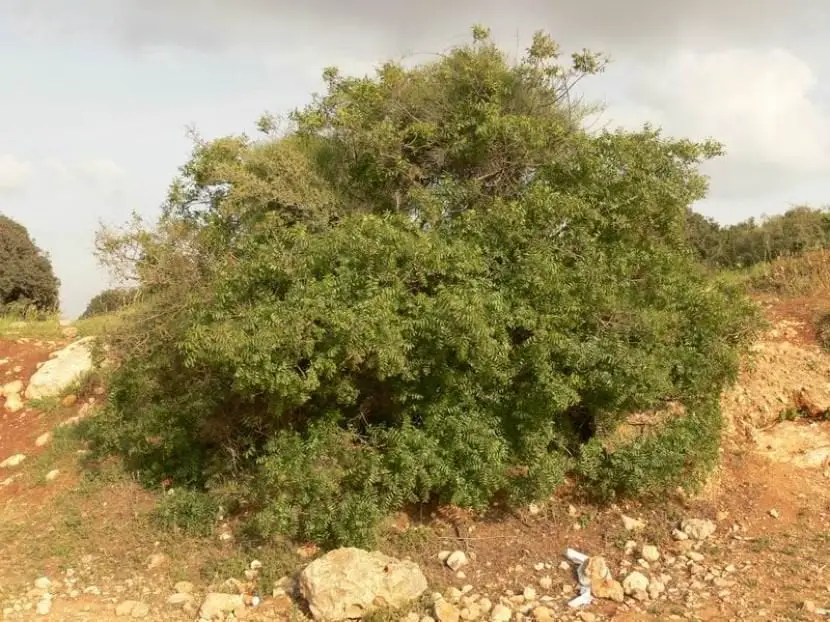
Image – biolib
The cornicabra It is a small tree that grows naturally in the fields of the Mediterranean region. It is a plant that resists drought very well; in fact, it can survive without problems in an area where it only falls about 350mm per year. It also withstands the Mediterranean summer sun, that is, the one that makes temperatures rise above 35ºC with extraordinary ease.
If we take this into account, even if it is a species, we are going to call, from the field, it can be very interesting to have it in a garden low or no maintenance.

The cornicabra, whose scientific name is pistachio turpentine, it is a small deciduous tree that grows up to five meters in height. It is not one of those that provides as good shade as a maple can, but over time it gives enough so that we can protect ourselves from the king star while we read a good book or simply enjoy the landscape.
Its growth rate is quite fastbeing able to grow at a rate of 30cm / year, and as it does not have invasive roots, it is a perfect plant to put in any sunny corner.

Resists high temperatures, light frosts down to -4ºC and if it was not enough, can be grown near the sea. All it needs is direct sunlight and regular watering every 3 days for the first year so that its roots develop enough so that next year they can withstand the drought.
In addition, it must be said that the fruits have medicinal properties. They are used as antispasmodics, expectorants, disinfectants, antiseptics and as an antineoplastic (prevents the development of tumor cells). To take advantage of them, you have to marinate 30 grams of green fruits per liter of wine for 9 days. After that time, it is strained or filtered and can be used for mouthwashes, to make bread, or as a condiment.
Interesting, right?

